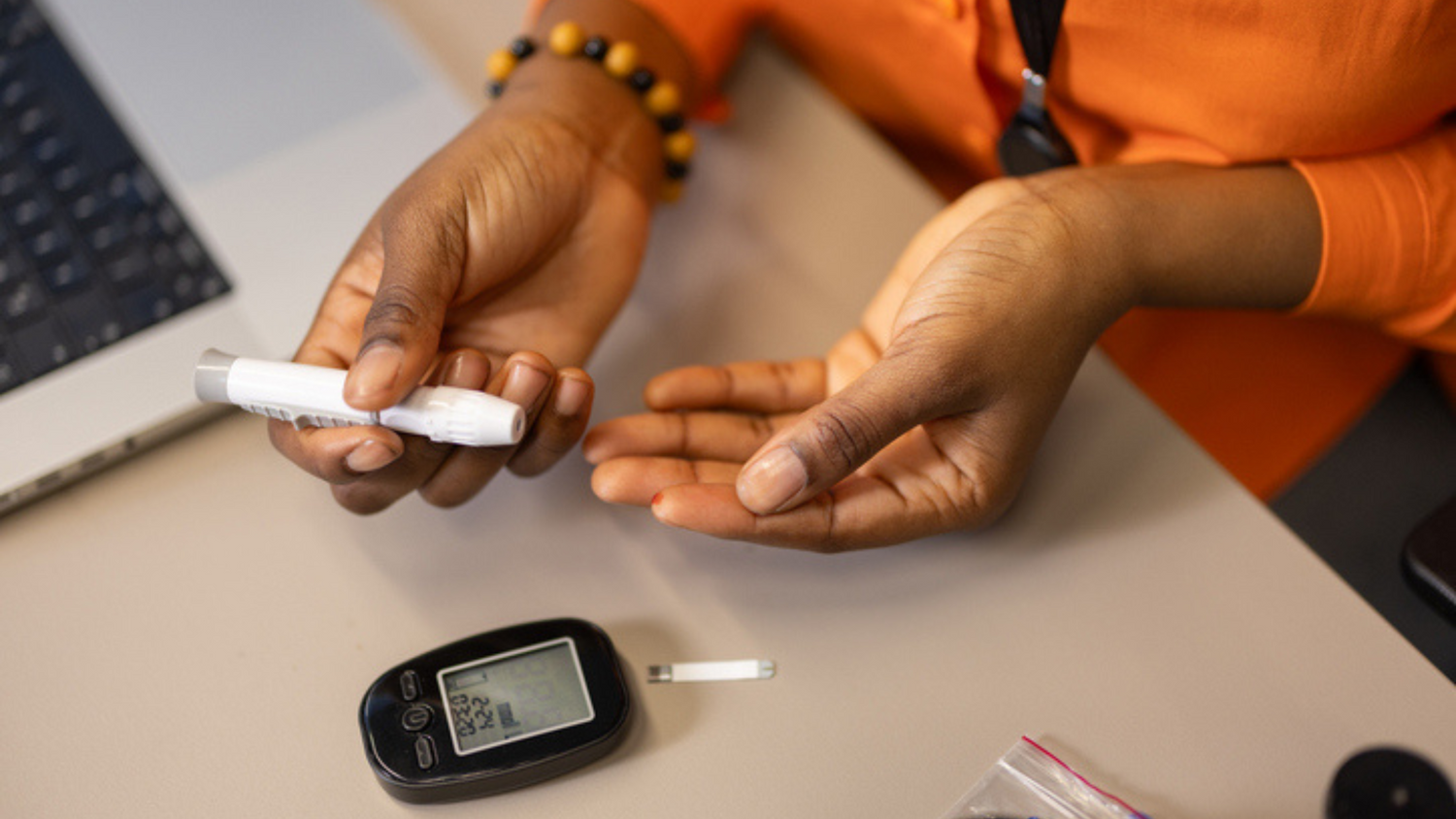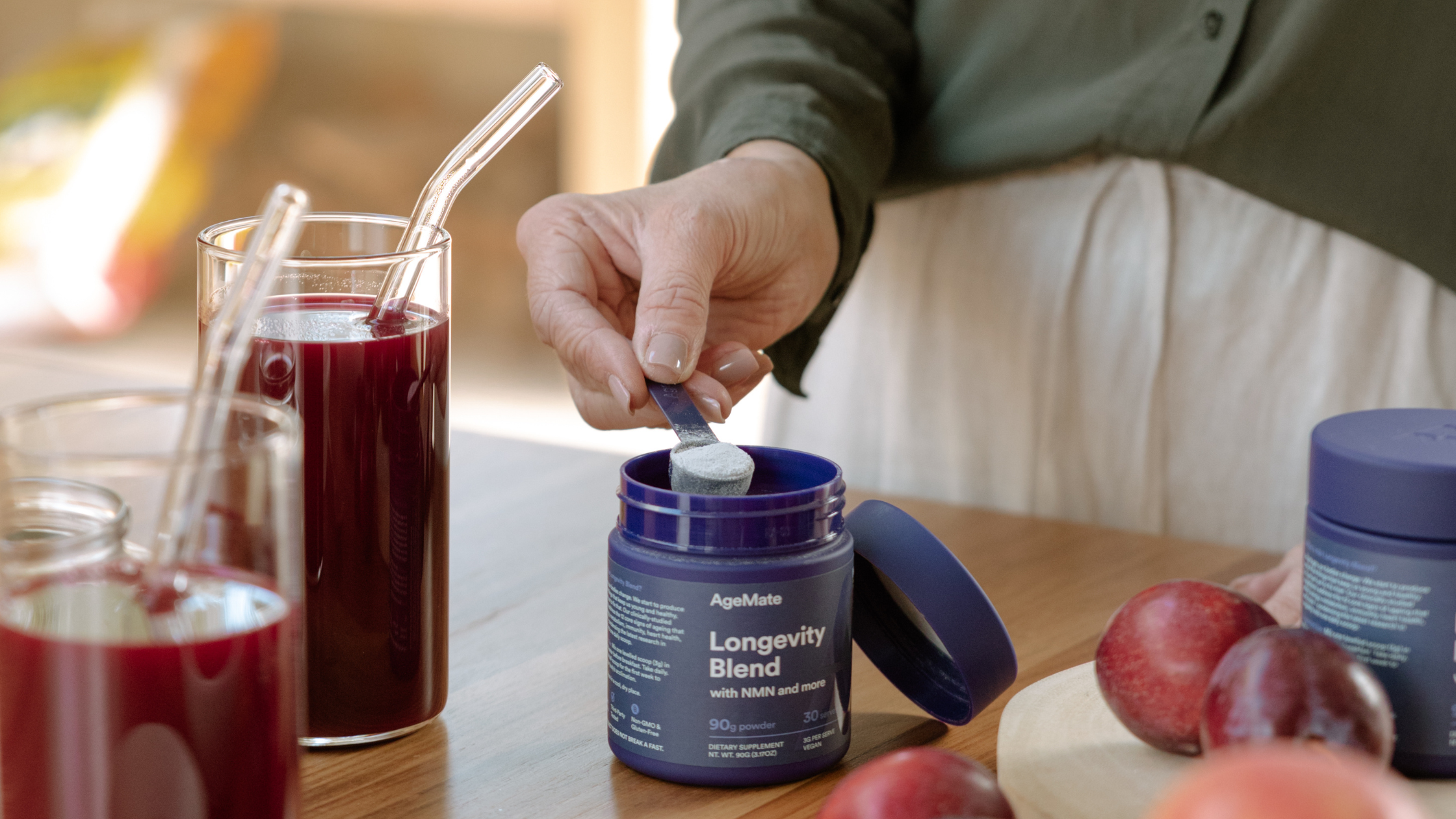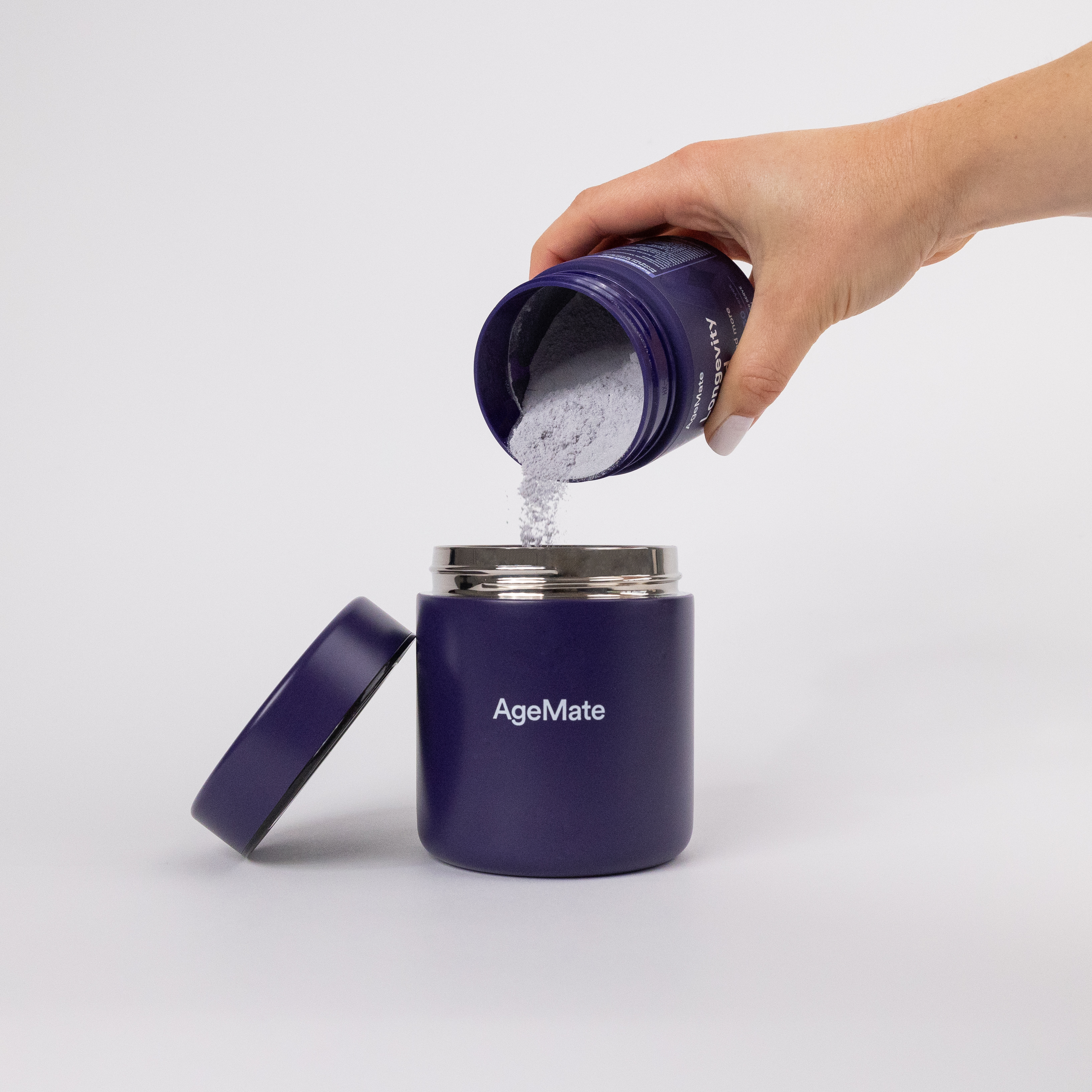Key Takeaways:
- Eating protein and fibre first can reduce blood sugar spikes after meals.
- Simple lifestyle changes like adding vinegar to meals and walking after eating can stabilise glucose levels.
- Managing stress and sleep are crucial for controlling blood sugar and supporting healthy ageing.
Did you know grapes can cause rapid blood sugar spikes due to their high natural sugar content? This is just one example of how everyday foods can influence your glucose levels more than you might realise. Understanding how to manage glucose spikes can lead to better health, higher energy, and even aid in fat loss without drastic measures.
In this blog, we’ll dive into practical, science-backed strategies popularised by biochemist Jessie Inchauspé, aka the Glucose Goddess, and explore 10 powerful hacks to help you manage blood sugar and support longevity.
The Impact of Blood Sugar Spikes on Health
Blood sugar, or glucose, is your body’s primary source of energy. But when levels spike too high, it can lead to a crash in energy, increased hunger, and over time, contribute to weight gain and chronic diseases like diabetes and heart disease (R). The good news is that by adopting simple habits, you can keep glucose levels stable and improve your overall wellbeing.
Let’s explore 10 easy ways to avoid glucose spikes, feel better, and support long-term health.
Glucose and Ageing: The Hidden Link
Blood sugar regulation plays a significant role in the ageing process. As we age, our body’s ability to efficiently manage glucose often declines, contributing to increased oxidative stress, inflammation, and the development of age-related diseases like type 2 diabetes, cardiovascular disease, and even cognitive decline (R).
High blood sugar levels can accelerate cellular ageing by damaging proteins and DNA, a process known as glycation, which contributes to wrinkles, sagging skin, and other signs of ageing.
By keeping glucose levels stable through diet, exercise, and lifestyle adjustments, you can help slow the ageing process. Incorporating the simple hacks mentioned in this blog can not only improve your energy and mood but may also support healthy ageing by reducing the negative effects of glucose spikes on your cells.
1. Start Your Meal with Protein and Fibre
Did you know the order in which you eat your food affects how your body processes glucose? Starting your meal with protein and vegetables can slow the absorption of carbohydrates, leading to a steadier rise in blood sugar (R).
Why It Works: Fibre and protein take longer to digest than carbohydrates, allowing glucose to enter the bloodstream more slowly. This can prevent the sharp rise in blood sugar that often follows a carb-heavy meal.
How to Apply It:
- Begin your meals with a salad or veggie-packed dish.
- Include a source of protein such as chicken, eggs, or legumes before eating your carbs.
2. Add a Splash of Vinegar
Incorporating vinegar, particularly apple cider vinegar, into your meals is a simple trick to lower post-meal blood sugar spikes.
Why it Works: Acetic acid, the active ingredient in vinegar, has been shown to reduce the glycaemic index of meals, slowing the release of glucose into the bloodstream (R).
Easy Ways to Try It:
- Use vinegar-based dressings on salads.
- Add a splash of vinegar to sauces or marinades.
- Drink a diluted tablespoon of vinegar before meals (if tolerable).
3. Choose Nuts as Your Go-To Snack
Nuts are packed with healthy fats, fibre, and protein, making them an ideal snack for balancing blood sugar.
Why it Works: The healthy fats in nuts slow down the digestion of carbohydrates, preventing rapid spikes in blood glucose levels (R).
Snack Ideas:
- Keep a portion of mixed nuts handy for mid-morning or afternoon snacks.
- Sprinkle almonds or walnuts on salads, yoghurt, or oats.

4. Stay Hydrated for Better Glucose Control
Drinking enough water is essential for keeping your blood sugar stable. When you’re dehydrated, your blood becomes more concentrated with glucose, which can lead to higher levels.
How Hydration Helps: Water supports the kidneys in flushing out excess sugar through urine, helping to keep glucose levels in check (R).
Pro Tip:
- Drink a glass of water first thing in the morning.
- Carry a water bottle with you to sip throughout the day.
5. Move After Meals
Did you know that even light physical activity after a meal can significantly reduce blood sugar spikes? Engaging in a short walk or some gentle stretches can help your muscles use up glucose, lowering your blood sugar.
Scientific Insight: Studies have shown that a 10-15 minute walk after meals can lower blood glucose levels and improve insulin sensitivity (R).
How to Fit It In:
- Go for a quick walk after lunch or dinner.
- Incorporate light stretches or household chores after meals.

6. Prioritise Sleep for Glucose Stability
Sleep isn’t just important for your energy levels—it plays a crucial role in regulating blood sugar. Poor sleep increases cortisol levels, which can make it harder for your body to manage glucose.
Why It Matters: Sleep deprivation has been linked to reduced insulin sensitivity and higher blood sugar levels (R).
Sleep Tips:
- Aim for 7-9 hours of quality sleep each night.
- Establish a calming pre-bedtime routine and limit screen time before bed.
7. Reduce Refined Carbs and Sugars
Refined carbohydrates and sugars cause rapid spikes in blood glucose levels, leading to energy crashes and increased hunger. By choosing whole grains and natural sweeteners, you can reduce these spikes and maintain more stable energy levels (R).
Smart Swaps:
- Choose brown rice or quinoa instead of white rice.
- Snack on whole fruits instead of sweets or sugary snacks.
8. Increase Fibre-Rich Foods
Fibre is your blood sugar’s best friend. It slows digestion and prevents sharp increases in glucose after eating.
How Fibre Works: By adding bulk to your meals, fibre reduces the speed at which carbs are broken down, leading to more gradual glucose absorption (R).
Fibre-Boosting Tips:
- Add vegetables, legumes, and whole grains to your meals.
- Sprinkle chia or flax seeds into smoothies, salads, or yoghurt.
9. Manage Stress to Control Blood Sugar
Chronic stress elevates cortisol, a hormone that raises blood sugar levels. Learning how to manage stress effectively can help you maintain stable glucose and prevent insulin resistance.
Science Behind Stress: High cortisol levels can trigger glucose release from the liver, leading to elevated blood sugar (R).
Stress-Reduction Strategies:
- Practice mindfulness, yoga, or deep breathing exercises.
- Make time for hobbies and relaxation each day.
10. Keep Consistent Meal Timing
Eating meals at regular intervals helps prevent large fluctuations in blood sugar. Skipping meals or going too long without eating can cause your blood sugar to drop and then spike when you finally eat (R).
Tips for Balanced Eating:
- Stick to a consistent meal schedule to avoid energy dips and spikes.
- Consider smaller, more frequent meals if you find it helps maintain steady energy levels throughout the day.

By incorporating these 10 hacks into your daily life, you can enjoy better energy, improved focus, and long-term health benefits. Remember, these simple strategies don’t require drastic lifestyle changes or intense workouts—just a little mindfulness goes a long way toward avoiding those pesky glucose spikes.
Try The Daily Longevity Blend, designed to optimise your health and keep you feeling your best. With blood sugar stabilising ingredients like magnesium, spermidine, and glycine, it's a simple step towards a healthier future—without the glucose rollercoaster.























